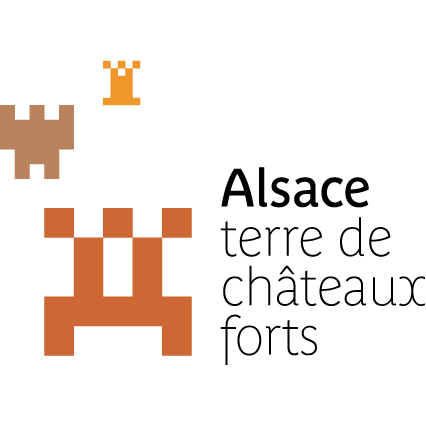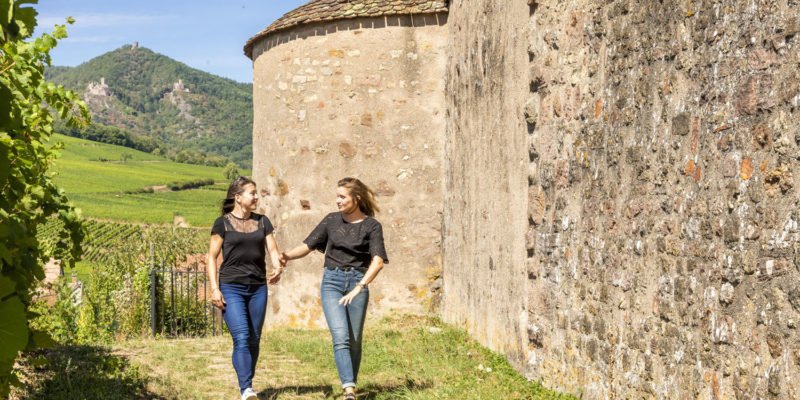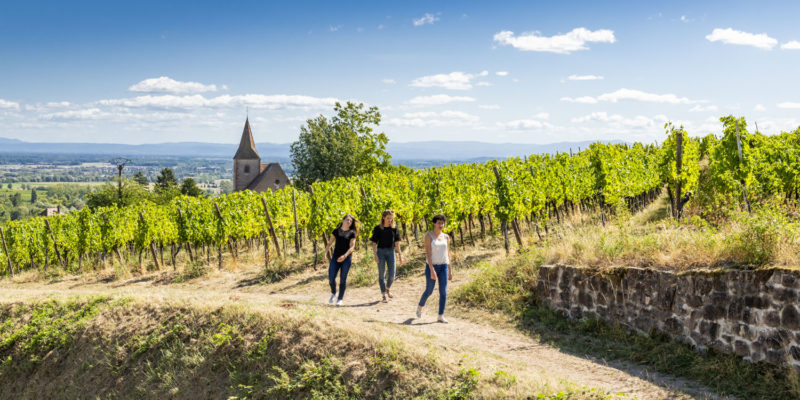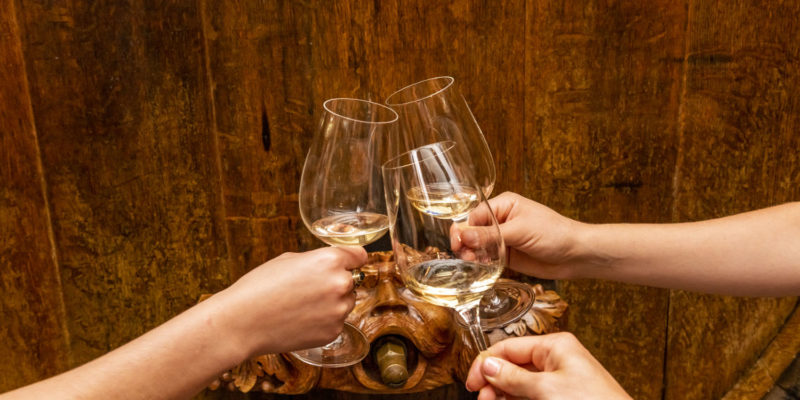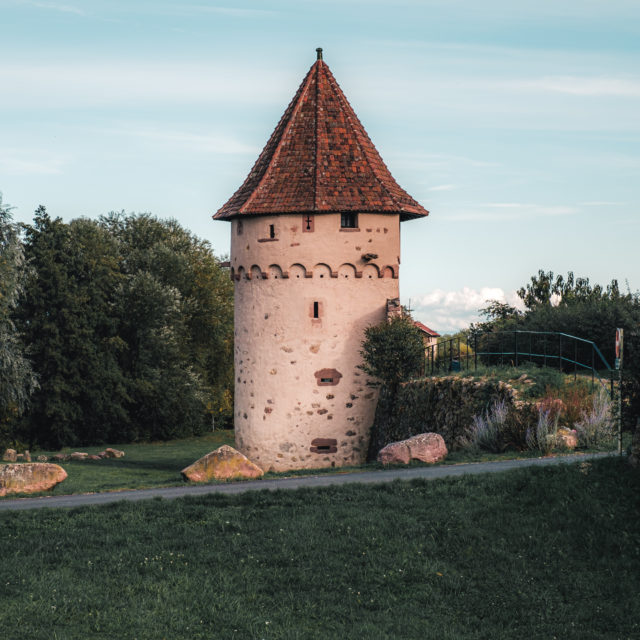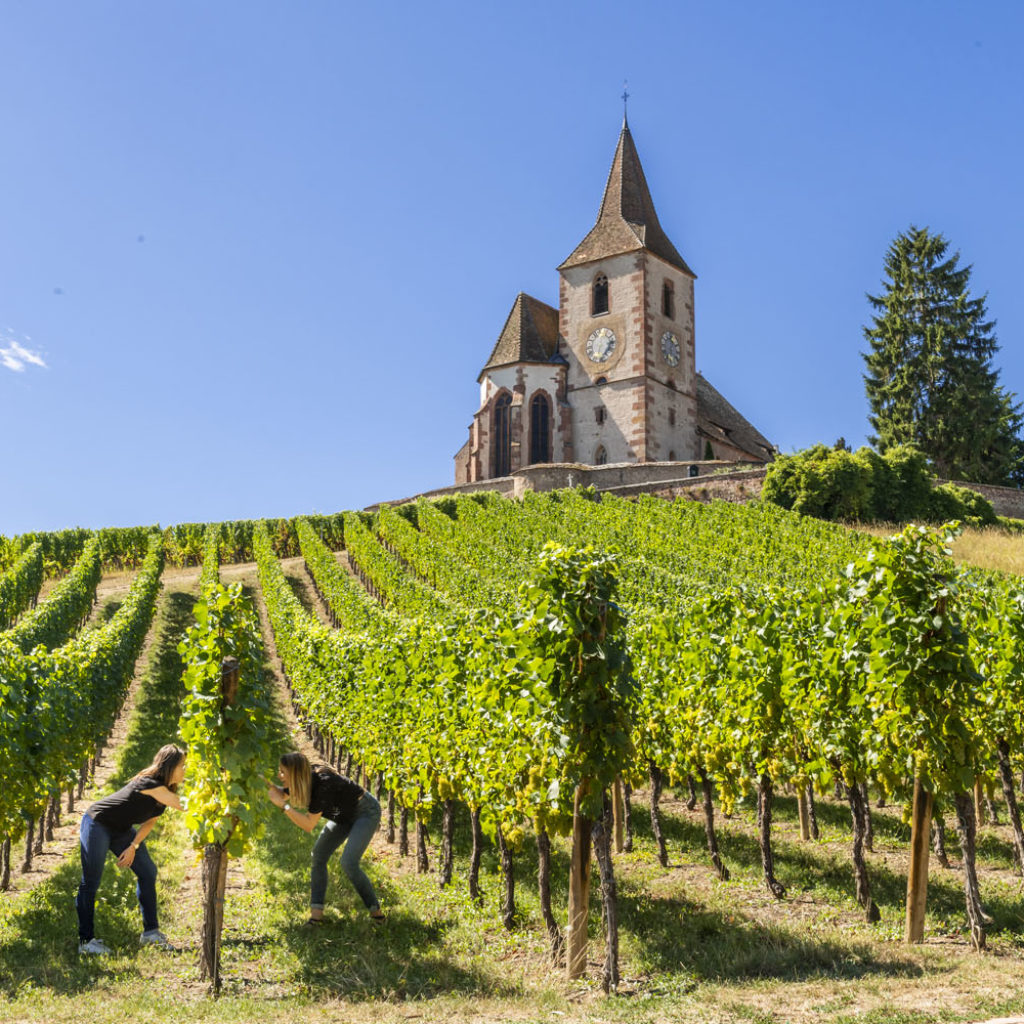
 Fortified city
Hunawihr
Fortified city
Hunawihr
Markers
Hunawihr owes its name to the holy washerwoman, Huna, who would have lived there in the 600s with her husband, the Lord of the Hunon Francs. Despite her status, this lady placed herself at the service of the poor, going so far as to wash their clothes herself, hence her nickname. For centuries, the church served as a keep where locals could take refuge in the event of an attack. This did not prevent the destruction of the estate by the Colmarians in 1291, nor the successive misfortunes of the Peasants’ War (1525) and the Thirty Years’ War (a century later). The quality of its wine is still the source of prosperity today.
History
One day, when the Hunawihr winemakers were unable to gather the harvest, Saint Hune performed a miracle by making wine flow from the fountain, which has since borne his name. In the 1520s, the village was an important place of pilgrimage, before protestants dispersed the relics of the saint two decades later.
Key points
Overlooking the village, in the middle of the vineyard, its 15th century Saint-Jacques-le-Majeur church, surrounded by a fortified cemetery, make Hunawihr an icon of the remarkable Alsatian landscape. On the facade of the town hall is a remarkably well-preserved crest from 1517. The winemakers' houses dating from the 16th to the 18th century are also worth a visit, and why not a tasting break for the wine lovers!
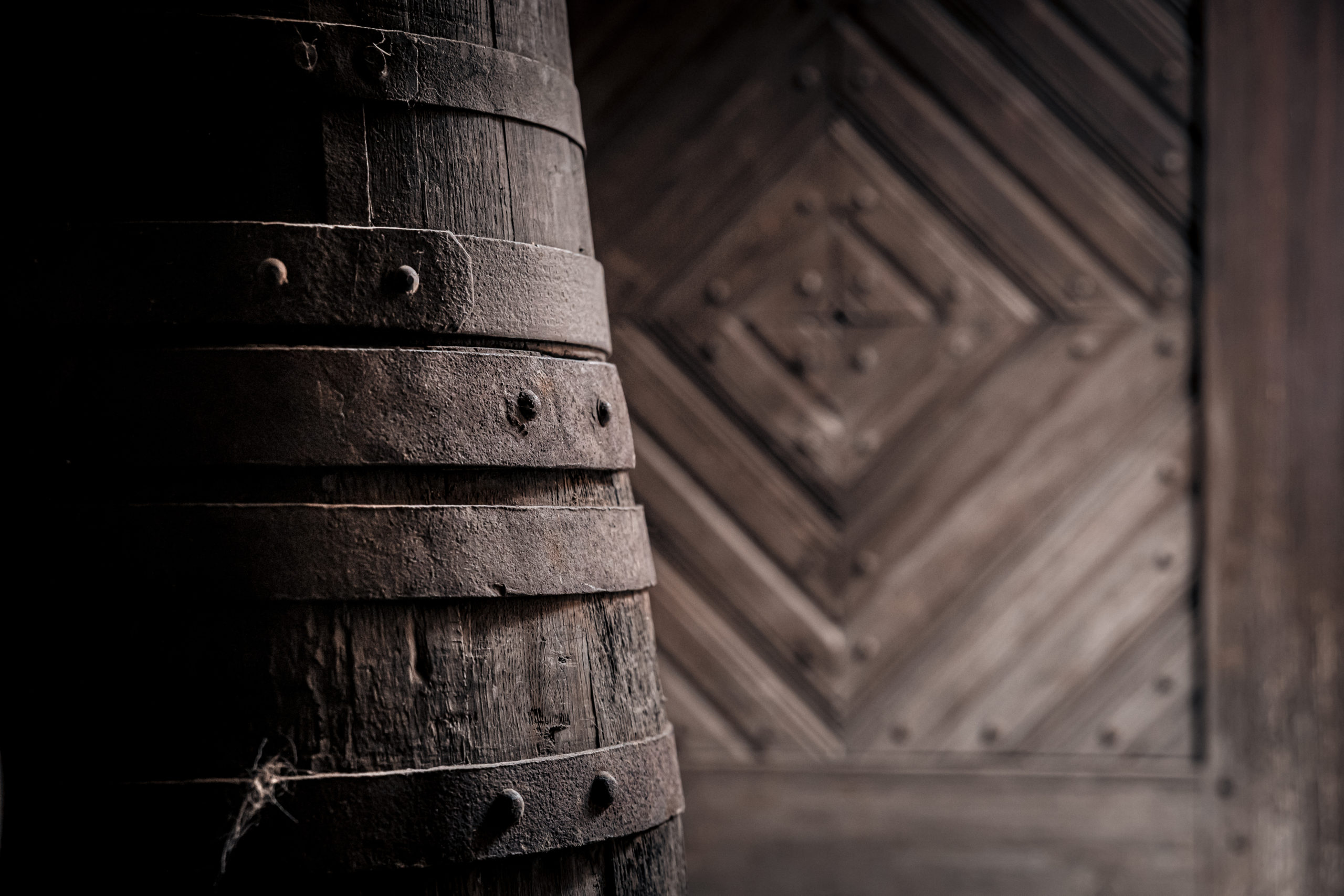
Practical informations
- Address
-
68150 Hunawihr - Nearest tourism office
- Office de tourisme Pays de Ribeauvillé-Riquewihr
10 Grand'rue - 68150 Ribeauville
03 89 73 23 23 - info@ribeauville-riquewihr.com
www.ribeauville-riquewihr.com - Facebook @paysribeauvilleriquewihr - GPS coordinates
- Lat.: 48.17999451 - Long.: 7.30968475
You would also like

Discovery circuit of Hunawihr


Discovery circuit of Hunawihr
68150 Hunawihr
03 89 73 23 23
info@ribeauville-riquewihr.com
